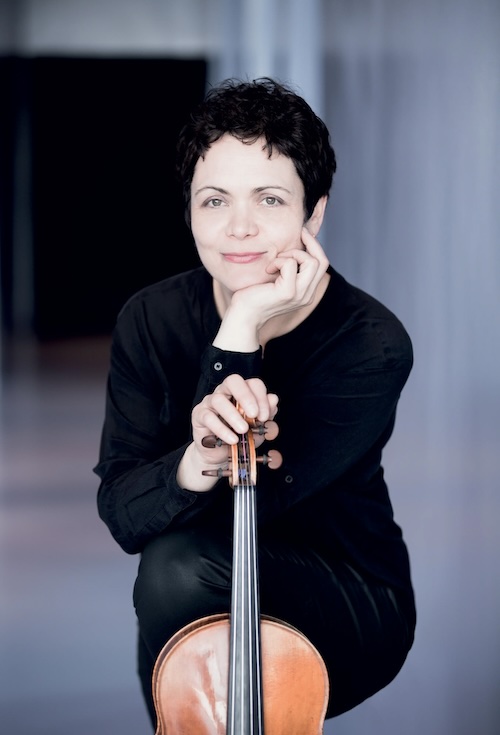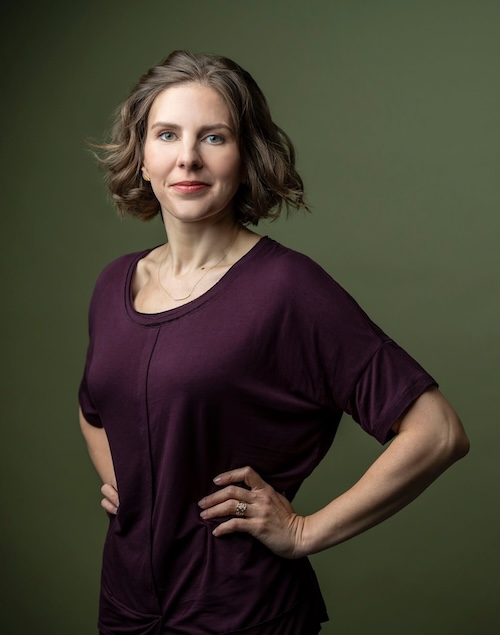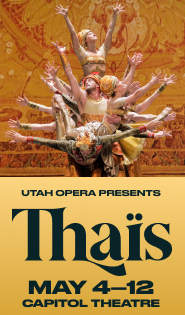The viola takes the spotlight with a Utah Symphony showcase for Tabea Zimmerman

Swiss composer Michael Jarrell shouldn’t be a stranger to Utah Symphony audiences. Thanks to former music director Thierry Fischer, several of Jarrell’s works have been performed in Abravanel Hall since 2012. And all of them had been co-commissioned by the Utah Symphony.
The orchestra’s most recent co-commission, Émergences-Résurgences, is essentially a single-movement concerto for viola and orchestra. Taking its inspiration in part from the pictorial works by the 20th-century Belgian-French poet and painter Henri Michaux, Jarrell crafted a vibrant work filled with vivid tonal imagery, ever-changing textures and restless, nervous energy.
Premiered in 2016, Émergences-Résurgences received its U.S. debut Friday evening. The Utah Symphony, under the baton of guest conductor Lidiya Yankovskaya, were joined by violist Tabea Zimmermann, for whom the work was written.
Zimmermann gave a compelling account, playing with forceful energy in the tutti sections, and with subtly crafted, lyrical phrasings in the solo passages. The work deftly switches between contrasting sections of sparse string accompaniment, punctuated by percussion and brass outbursts, to full-out playing by the entire orchestra. In each case Zimmermann brought cohesiveness to what seems at times a disjointed connection between soloist and orchestra.
To her credit, Yankovskaya never let the orchestra overpower Zimmermann’s playing. The conductor created a fine balance between the two that allowed them to mesh and bring about a unified structure to their collaboration.
After intermission, Zimmermann returned onstage with the orchestra to play Carl Maria von Weber’s brief Andante and Hungarian Rondo. This piece allowed Zimmermann to showcase her lyrical side in the Andante and a playfulness in the Rondo, with Yankovskaya offering subdued accompaniment to the soloist. The work fit in perfectly as an encore piece to the Jarrell.
The other major work on the program is Tchaikovsky’s Symphony No. 2.
While the Russian composer’s last three symphonies are staples of the orchestral repertoire, the first three have been unduly relegated to a lesser place in his symphonic output. But those early works have as much to offer as his better known symphonies in terms of inventiveness, musicality and rich expressiveness. They may not be as emotionally supercharged as the final three symphonies, but they are still remarkable works that show Tchaikovsky at his best.
Yankovskaya gave a dynamic reading Friday evening of the Second that captured the character of each of the four movements. Her interpretation underscored the often subtle shifts in mood, and she kept the orchestra in check for the fortissimo sections. The playing by the different sections of the orchestra was well balanced throughout.
In the opening movement, the Russian-born conductor, who just ended her tenure as music director of Chicago Opera Theater, underscored the ebullience of the music with carefully constructed climaxes and finely crafted contrasts. She managed to get the orchestra to play with a light touch and never let any section overpower the others.
The middle movements were delightful. The second movement flowed with lighthearted grace and fluid playing from the strings that emphasized the movement’s charm and tunefulness. And Yankovskaya found the perfect tempo for the ensuing Scherzo that allowed the playfulness of the music to shine through.
The finale, based on three Ukrainian folk tunes, is exuberant and lively, and Yankovskaya stressed the vitality of the music in a vivacious reading that brought out the carefree nature of the movement.
The concert opened with a three-movement suite from Rimsky-Korsakov’s penultimate opera The Invisible City of Kitezh. The music is taken from some of the major events in the story and alternates between dark moodiness, dramatic power and softy evocative lyricism. Yankovskaya elicited clean, precise playing from the orchestra that highlighted the descriptive character of the music. Of special note were the numerous solo oboe passages played by principal Zachary Hammond.
The program will be repeated 7:30 p.m. Saturday. utahsymphony.org

